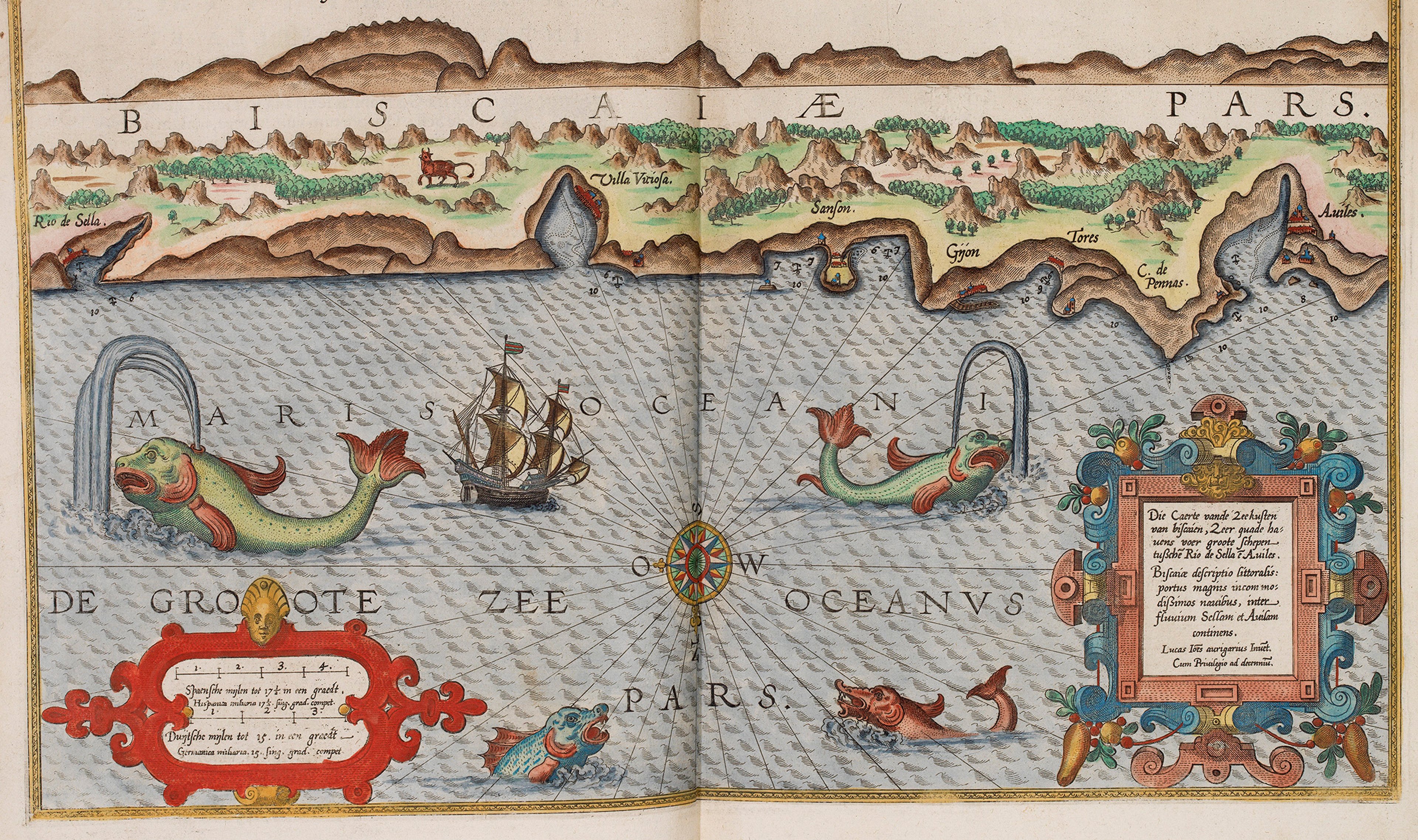Münster's Monsters
Explore the beloved image of monsters of the land and sea, from the 'Cosmographia Universalis'
The legend of sea monsters prowling in uncharted waters has captured the imaginations of sailors and mapmakers alike for centuries.
In his encyclopaedia 'Naturalis Historia' (77–79 CE), Pliny the Elder theorised that every land animal had an equivalent in the ocean, conjuring some extraordinary ideas about what half-animal-half-beast may be lurking in the water! The earliest known depiction of sea monsters on maps in Europe dates back to 10th century mappamundi, and they would appear on maps well into the 17th century.
Sea monsters were immortalised on authoritative old European maps and books to educate readers about the oceans, and as a word of warning for travellers. One influential work dedicated an entire spread to them: Sebastian Münster's 'Cosmographia Universalis'.
Was it delirium at sea, myth, or did these creatures truly exist? Read on to find out more about the fabled sea monsters featured on this remarkable image!
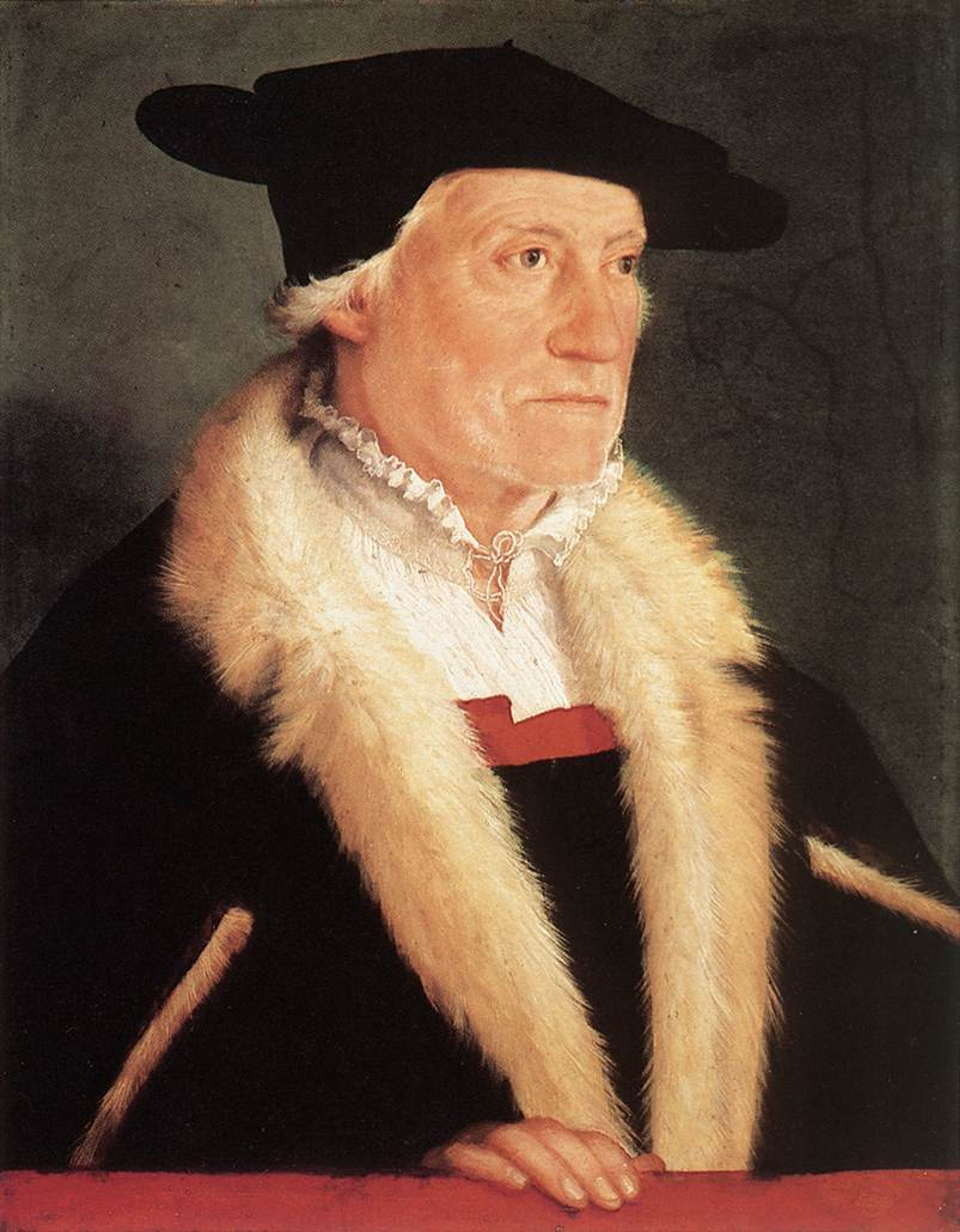
Portrait of Sebastian Münster by Christoph Amberger, c. 1552. Credit: Art Renewal Center. Public Domain, via Wikimedia Commons.
Sebastian Münster (1488-1552)
Münster was a prolific cosmographer, theologian and linguist. He was a monk from the Franciscan order who studied in Tübingen, Germany, and taught in the famous intellectual centres of Basel and Heidelberg, before leaving the religious order and moving to Basel permanently. Here in Switzerland, he indulged in his other great love: cartography.
In 1540, Münster published his important edition of Claudius Ptolemy's 'Geographia', and four years later, his greatest work, the ‘Cosmographia Universalis'.
The Cosmographia
The Cosmographia Universalis is an illustrated chronicle of the known world. It contains Munster's famous world maps and early maps of Asia, and Africa and the Americas. The work also has nine maps of Europe, three marvellous folding panoramas, 46 city views, and over 1,000 woodcut illustrations and diagrams!
These finely engraved embellishments were created by an illustrious roster of talented 16th century artists who included Hans Holbein the Younger, Urs Graf, David Kandel, and in the case of this monsters image, Hans Rudolph Manuel Deutsch: the initials H. R. - M. D. have been carved into the lower right corner of the woodblock.
The Cosmographia was highly influential and acted as the geographical source for many important mapmakers, including Ortelius and Mercator. It was based partially on findings from an international community of scientists and intellectuals, and on classical works by the likes of Claudius Ptolemy. Münster's also contributed a great deal of his own research to this work. According to the British Library, it was so popular that it ran into at least 35 editions, and was published in 5 different languages.
The Cosmographia held by The Sunderland Collection dates to 1559 - you can explore the entire work here.
This iconic plate is entitled 'Mostri Marini et Terrestri...' (Monsters of the Sea and Land...). It presents a menagerie of gruesome serpents with sharp teeth, some half fish, half wild animal; giant crustaceans pincering sailors; and some more familiar aquatic and land animals such as bears, reindeers, lobsters, and snakes.
As well as being a contemporary insight into Europeans' understanding of the world, natural history, and the ocean, the monsters on a map can indicate where the cartographer might have sourced their information.
The creatures featured here by Münster derive from a map of the North Atlantic and Scandinavia by Swedish historian and geographer Olaus Magnus. Known as the 'Carta Marina' (1539), it was published by Italian master engraver Antonio Lafréri.
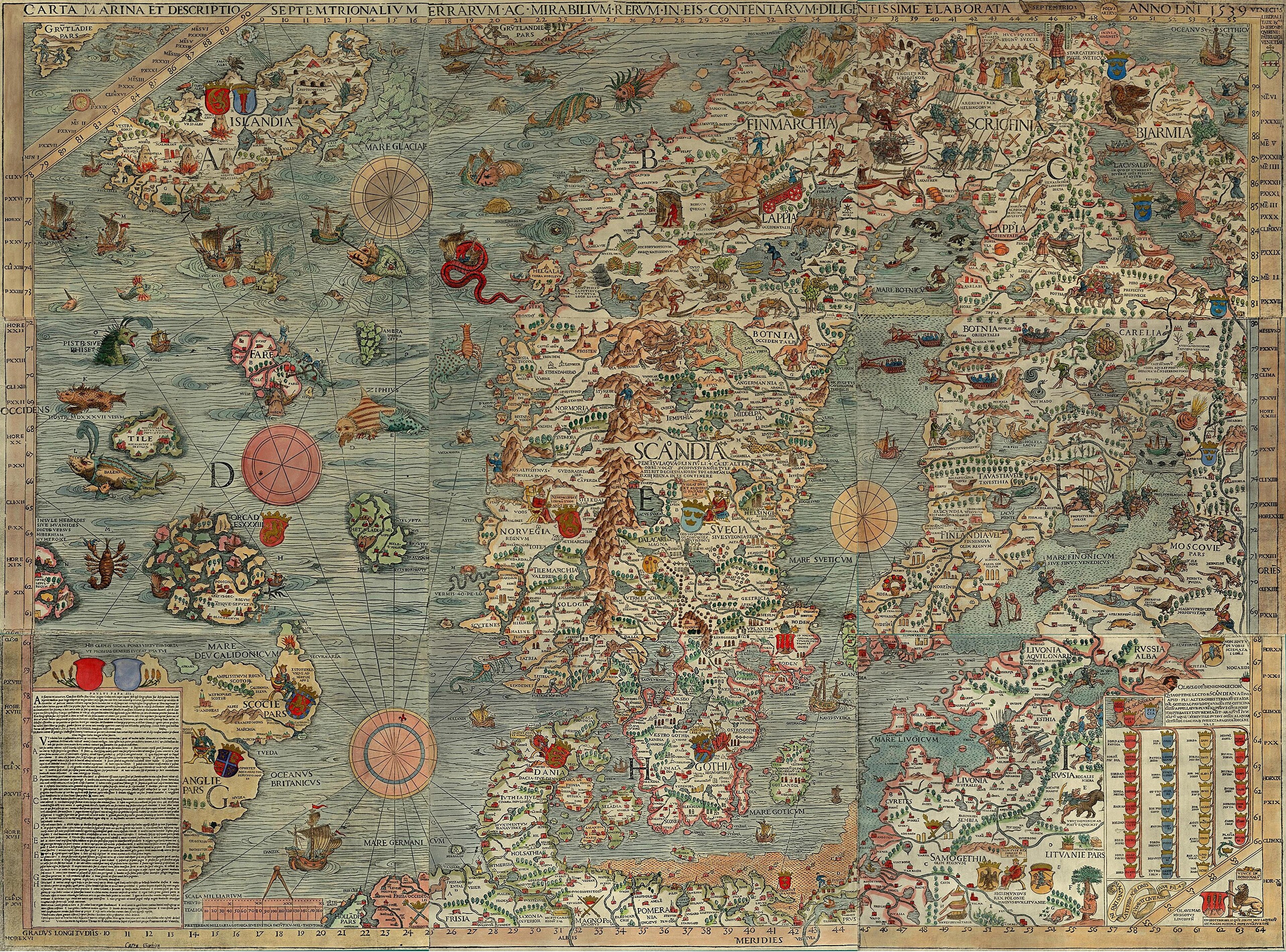
"A Marine map and Description of the Northern Lands and of their Marvels, most carefully drawn up at Venice in the year 1539 through the generous assistance of the Most Honourable Lord Hieronymo Quirino" by Olaus Magnus. Credit: http://www.npm.ac.uk/rsdas/projects/carta_marina/carta_marina.jpg - Public Domain, via Wikimedia Commons
Meet the Monsters
Accompanying this plate in the Cosmographia are brief and bizarre descriptions about each monster, touching on their appearance, apparent sightings, and the damage they might inflict on whoever has the misfortune of encountering them.
Here are the translations from the 1559 Latin edition held in the Sunderland Collection...
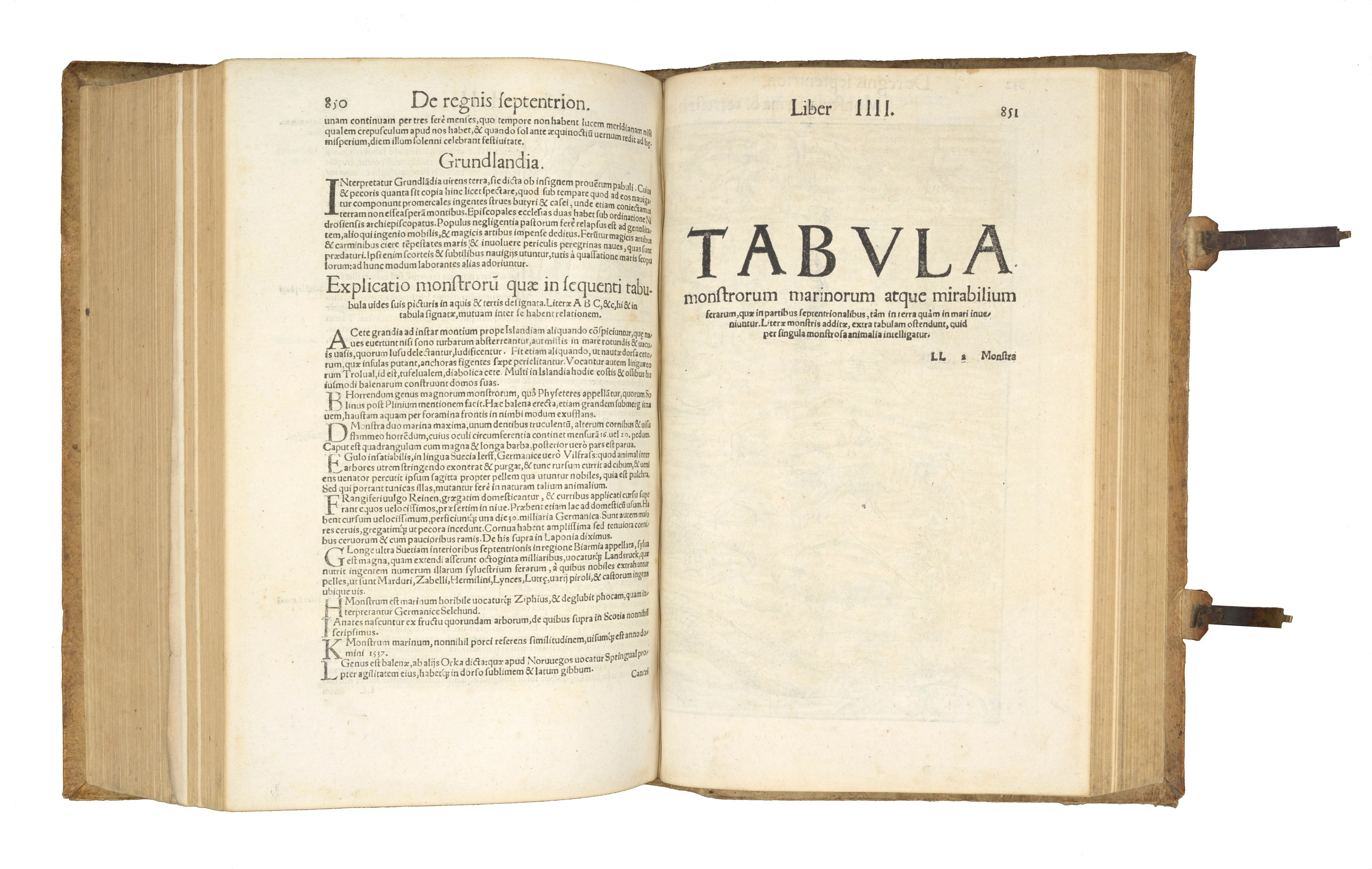
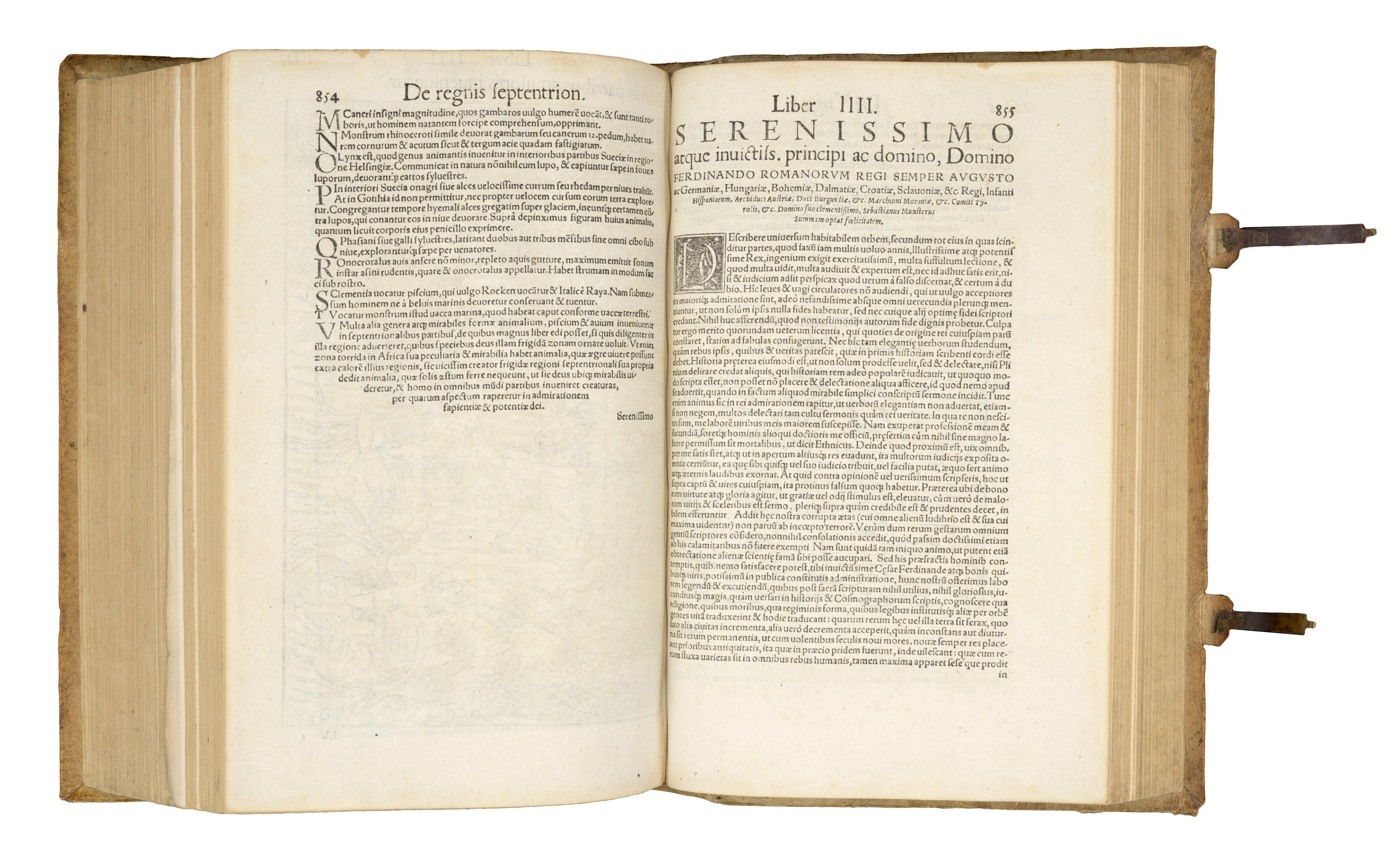
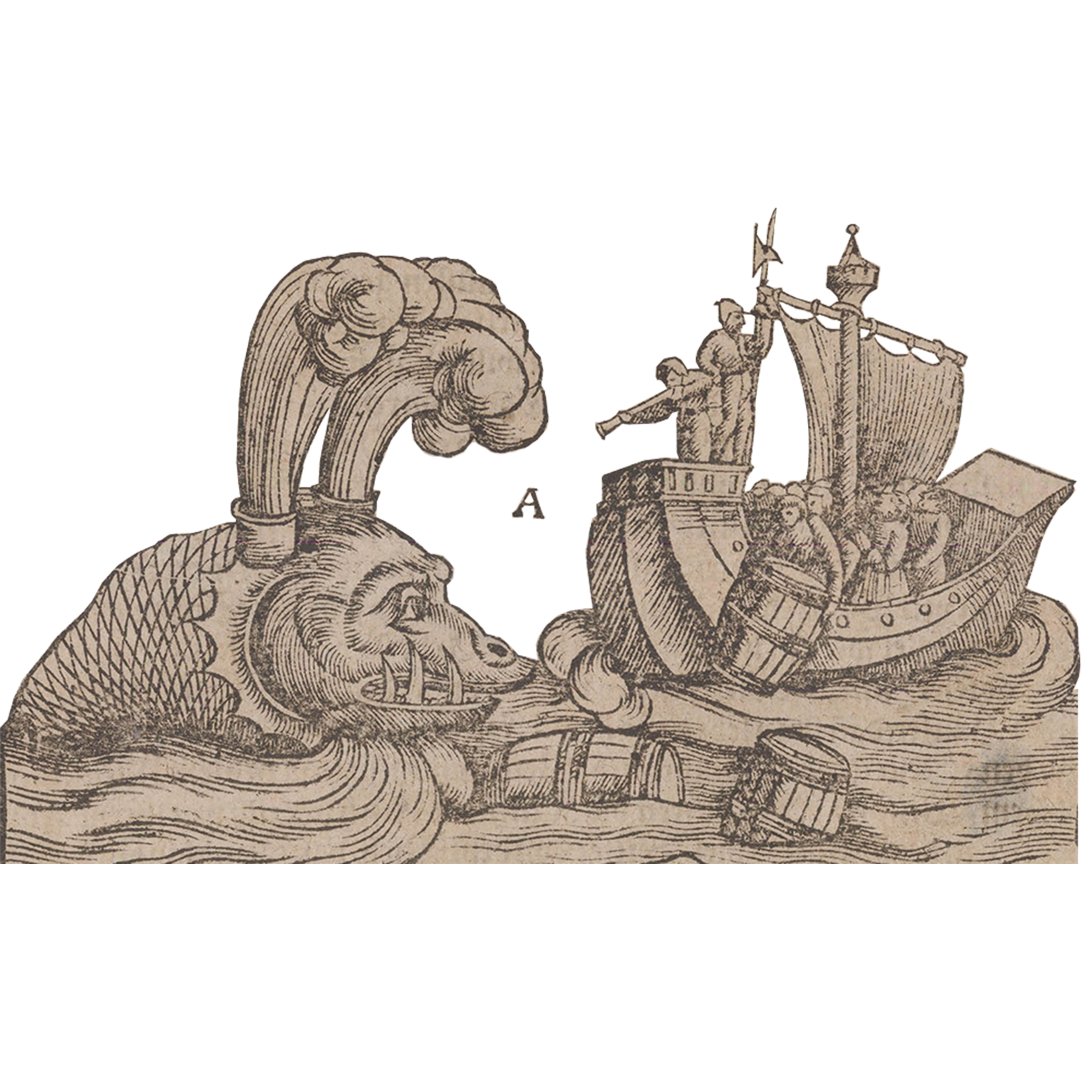
A - Whales as large as mountains were seen near Iceland. They overturned ships unless they were frightened away by noise, or by empty vessels [barrels] thrown into the sea at them, and they delight in the sport. Sometimes sailors would cast their anchors into the backs of whales, thinking they were landing on islands. They were called 'Trolual', or the devilish whale. Many people in Iceland built their houses with the ribs and bones of whales.
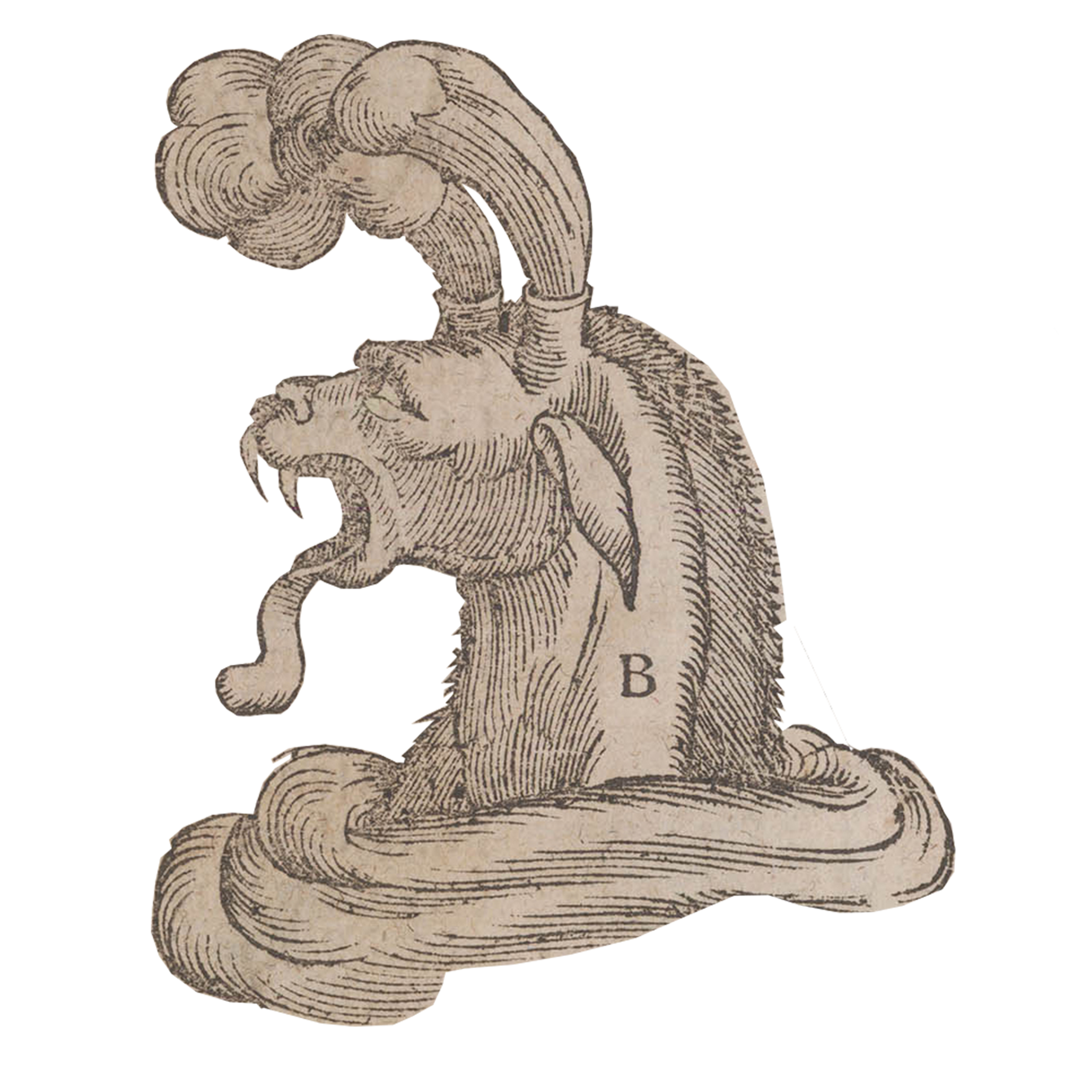
B – This terrible giant monster was known as 'Physeteres'. It was referred to by Roman compiler Solinus and also Pliny the Elder. The Physeteres reared up from the sea, spouting water through the blowholes in its forehead 'in the manner of a cloud'. The water would soak ships, and submerge them.
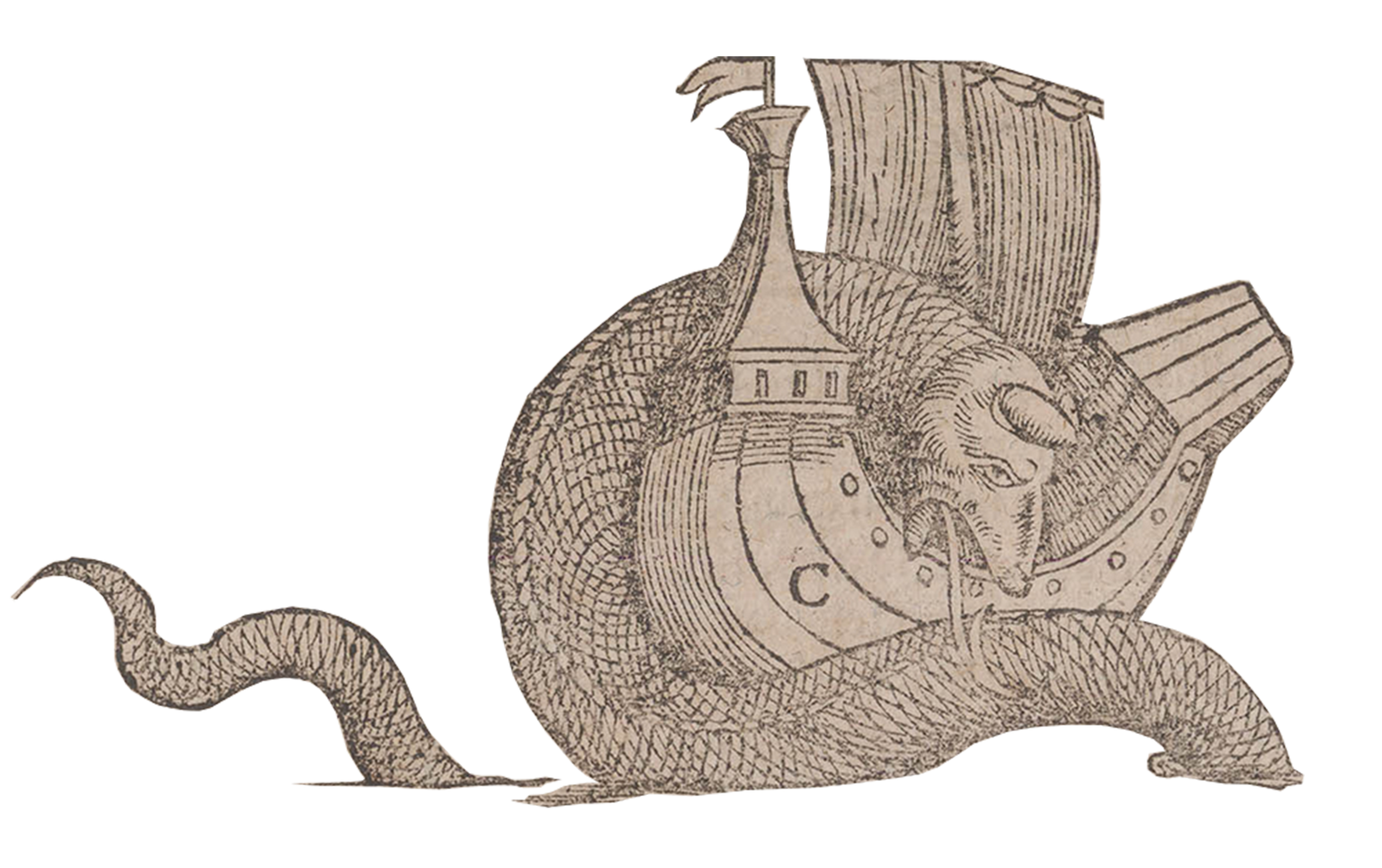
C – This terrifying sea serpent entangling a ship was said to be 200 to 300 feet long! Such sea snakes would twist around the ships and attempt to sink them, and to harm the sailors, especially when the sea was calm.
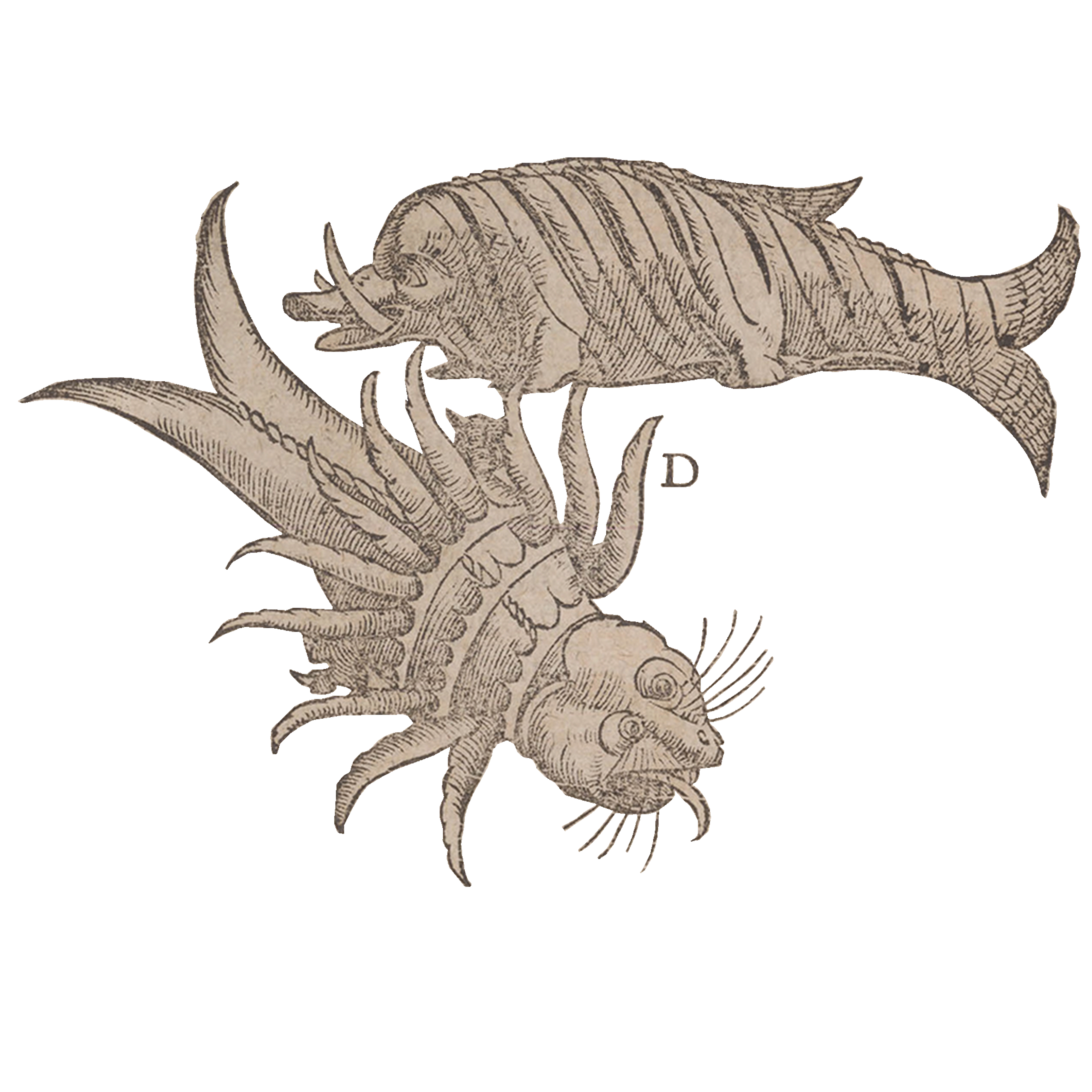
D – Two enormous sea-monsters: one with huge teeth, the other with many horns and a flaming gaze, with eyes 16 or 20 feet wide! Their heads are large, but their posteriors are small.

E – These wolverines have an insatiable appetite. In Sweden they were known as 'Jerf', in German 'Vielfraß', and in Latin 'Gulo'. They would relieve themselves by squeezing themselves between trees, and then run back to eat more! They were hunted with arrows for their fur because of its beautiful appearance, which was used by nobles; but the people wearing the fur would take on the beast's nature.
F - The wild reindeer are tamed in herds, and employed to pull carts. They can apparently outrun the swiftest of horses - even in the snow! They have very large horns (although thinner than deer), and are milked for domestic use. They are also described in the image of Lapland in the Cosmographia.
G - These creatures [sables, bears and other woodland animals] live far beyond St Petersburg, in the region called Bjarmia. There is a great forest called Landsruck which extends for 80 miles, where these wild beasts and a number of other animals live - including beavers and otters, which were hunted for their handsome skins. There is an abundance of martens, sables, stoats, lynxes, otters, porcupines and beavers everywhere one looked.

H – This horrible beast was known as a 'Ziphius'. A terrifying sea monster, it devoured black seals, which in German were referred to as 'Selehund' ('Hund' meaning dog).
K – This sea monster bears some resemblance to a pig, and was supposedly sighted in the year 1537.
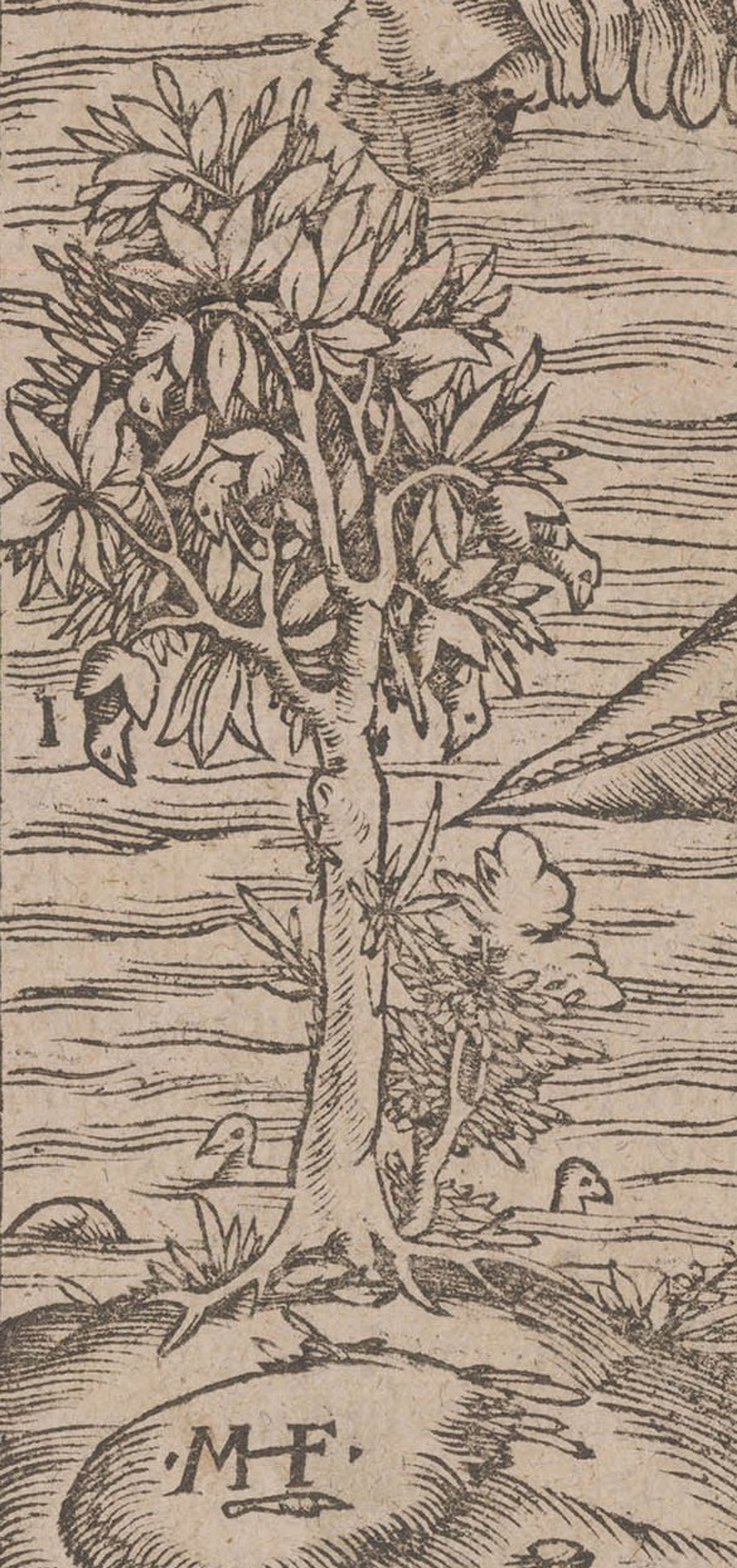
I – Ducks were said to have hatched from the fruit of certain trees. This is elaborated on in the description of Scotland in the Cosmographia.

L – This curious creature is an orca whale. The Norwegians call them 'Springvhal' because of their agility. They have tall, broad hump on their backs.
M - Crabs of remarkable size, commonly called shrimps. They are so strong that they can overwhelm and crush a swimming man with their powerful claws.
N – This monstrous rhinoceros-like being eats shrimps and crabs. It has a 12-foot nose with horns which was sharp like a spear, and a spined, peaked back!
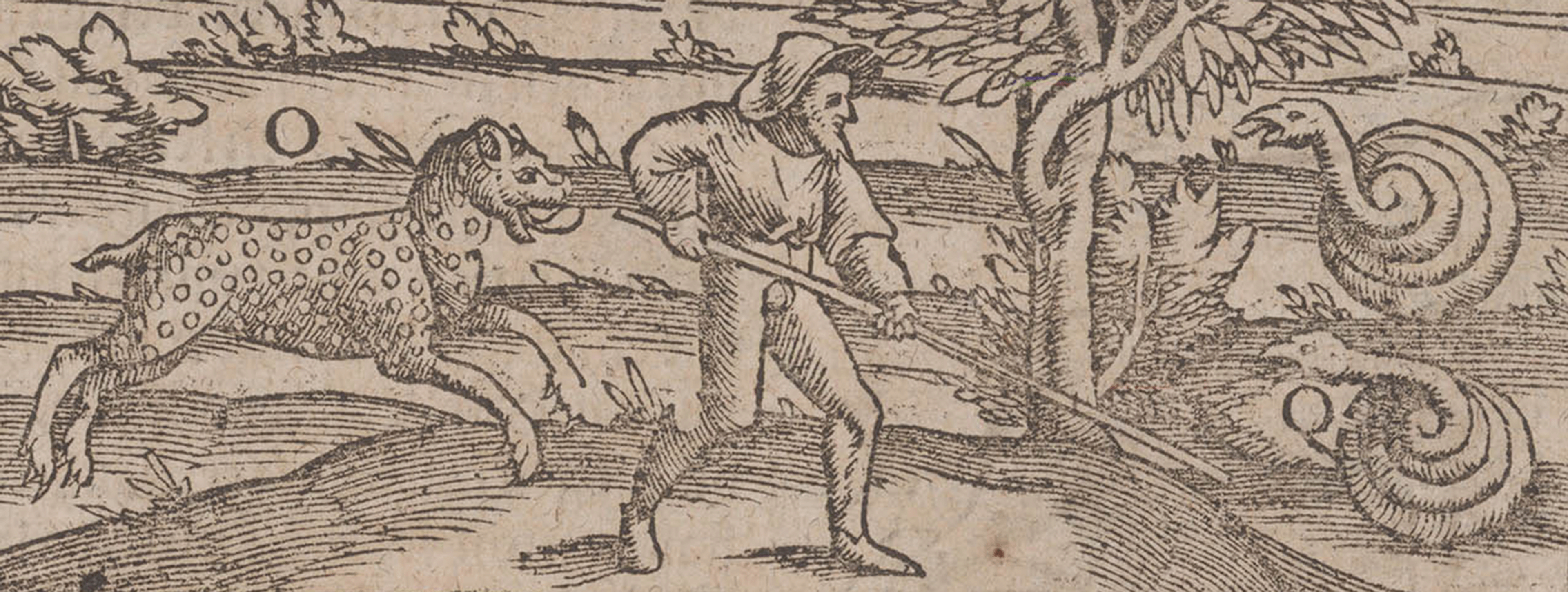
O – The lynx is a species found in the interior of Sweden. They share some similarities with wild wolves and are said to have been caught in wolf dens. These creatures apparently have a penchant for devouring them too!
Q – Here, a farmer probes some wild snakes. Oddly, the original description states: 'Pheasants or wild turkeys would hide for two or three months without any food under the snow, and were often being sought out by hunters'.
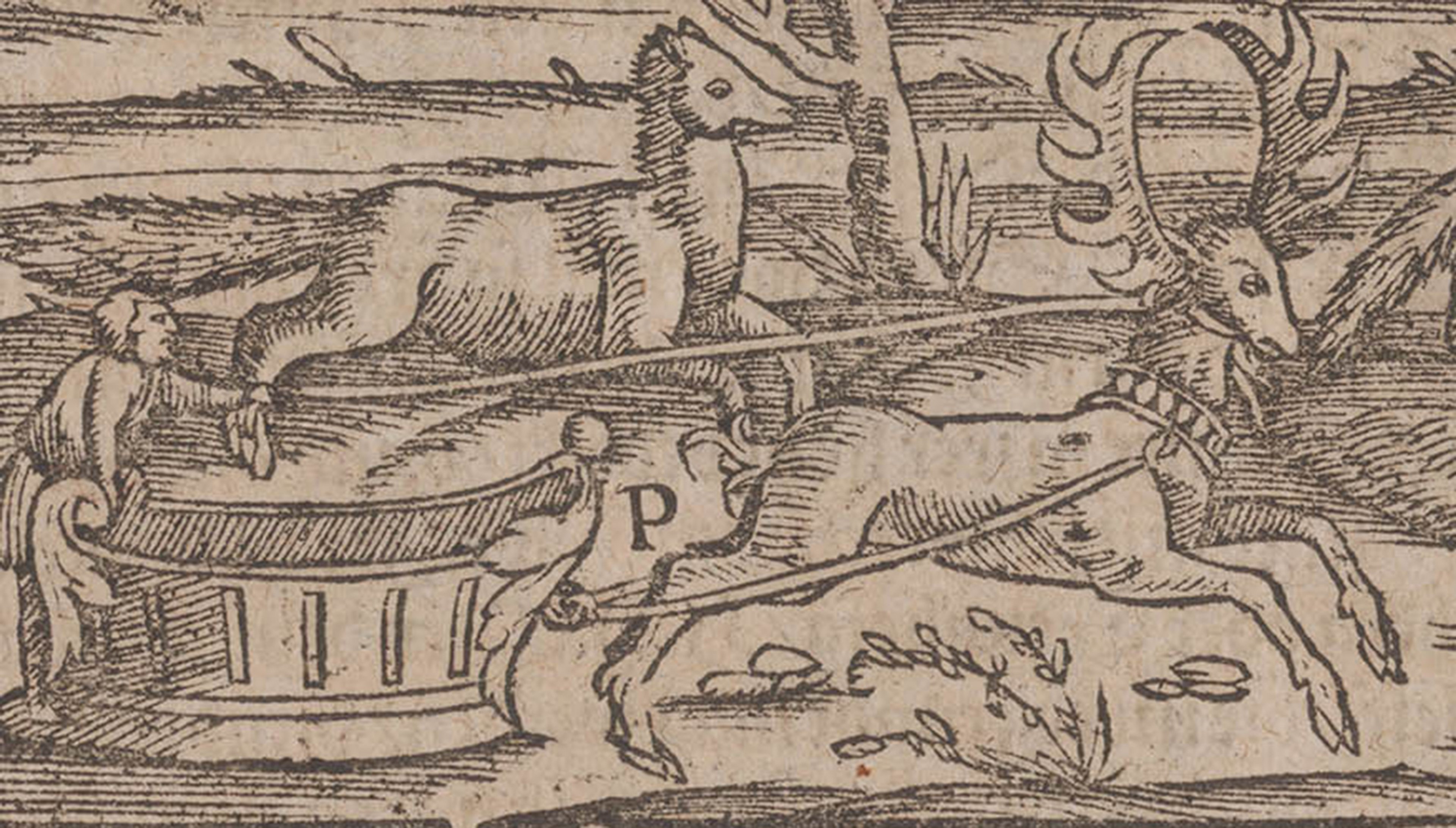
P – In Sweden, ‘onagers’ or elks, can pull carts through the snow with great speed. But in the land of Gothia this is not permitted! During the winter, the moose or elk gather in herds on the ice. They struggle with packs of wolves that would try to devour them in the snow.

R - The onocrotalus is a species of goose. When its throat filled with water it makes a loud sound like a braying donkey. It has a goiter [irregular growth in the neck] in the form of a sack.
S - This strange fish is called 'Clementia', or 'Rocken' - or in Italian, 'Raya'. It is said to have protected a man who drowned from being carried away by the sea monsters.
T - This monster is called a Sea Cow, because it looks like a land cow!
V - Munster does not give any details about these bizarre species, instead he notes that, "Many other kinds of animals and wonderful forms of fish and birds are found in the northern parts, about which a great book could be written if one were to diligently come to that region, with which species God wanted to adorn that frigid zone. For the torrid zone in Africa has its own peculiar and wonderful animals which it has given its own to live with difficulty, animals which cannot bear the heat of the sun, as if God were everywhere a wonderful viper, the sight of which would carry one into admiration of the wisdom and power of God."

This wonderful image, and indeed the Cosmographia itself, was a hugely influential work. Here, you can see how cartographer Abraham Ortelius was inspired by Münster when creating his famous map of Iceland for his atlas Theatrum Orbis Terrarum (1603):
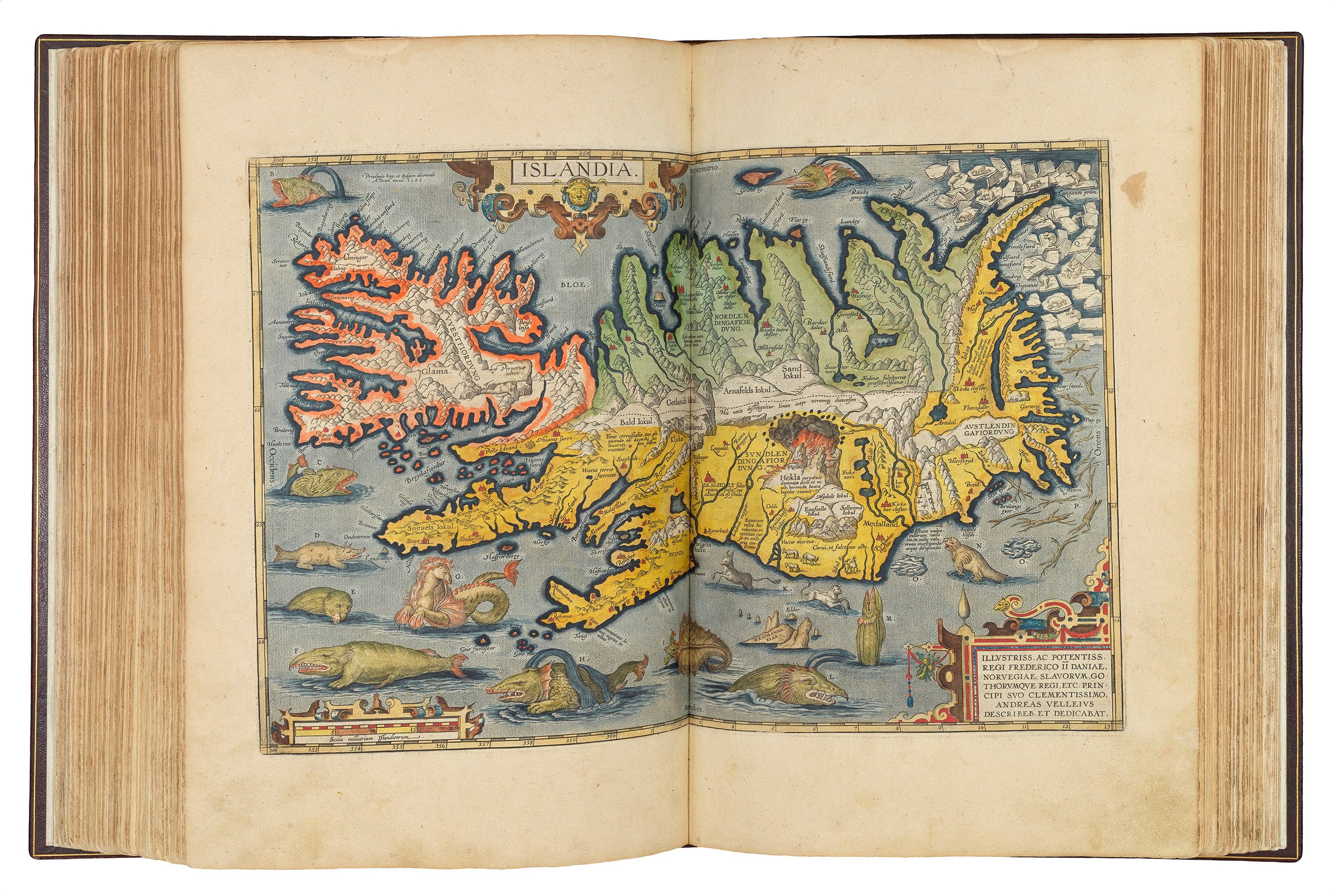
The Sunderland Collection has created a limited edition fine art print inspired by Münster's image of the monsters of the land and sea. In homage to Munster, this work has been lovingly brought to life at Plaintiff Press using traditional printing methods and paper. Find out more in the Oculi Mundi shop!
References
The descriptions of the monsters above have been translated from the Latin text in the 1559 edition of the Cosmographia held in the Sunderland Collection - with the exception of Monster C, which has been taken from the verso of the German edition.
- Chet Van Duzer, Sea Monsters on Medieval and Renaissance Maps (London: The British Library, 2013).
Frank Jacobs for bigthink.com - Strange Maps Blog: "Münster’s Monster Mash" (March, 2013)
Lecture given by Chet van Duzer at Santa Barbara Maritime Museum on May 15, 2014. Hosted on Medievalists.net
Joseph Nigg for Public Domain Review: "Olaus Magnus’ Sea Serpent" (Feb 5, 2014)
Hannah Waters for Smithsonian Magazine: "The Enchating Sea Monsters on Medieval Maps" (October, 2015)






